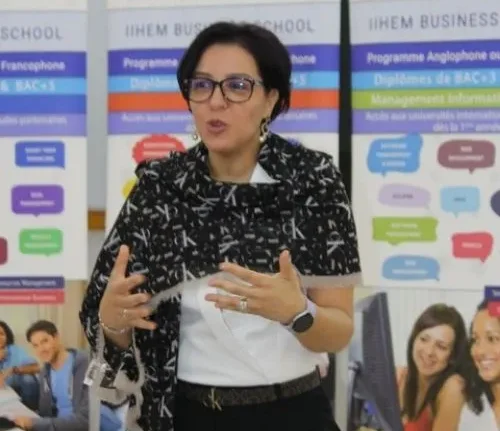Physical Intelligence: The Future of AI and Robotics
Introduction
As a former robotics student, I have personally experienced the challenges of bridging the gap between artificial intelligence (AI) and robotics. The separation between the two fields has been a longstanding issue, with AI confined to computers and robots lacking true intelligence. However, recent developments in the field of physical intelligence are breaking down these barriers and paving the way for a future where AI and robotics seamlessly integrate.
The Story of a Birthday Cake
Let me begin by sharing a personal anecdote from my time as a student. A group of us decided to make a special present for our professor’s birthday—a robot programmed to cut a slice of cake. However, our grand plan went awry when we mistakenly programmed the robot to cut a square, hard ice cream cake instead of a soft, round sponge cake. Despite the robot’s wild flailing, our professor found amusement in the situation and coined the term “control singularity” to describe the erratic behavior. This experience taught me a valuable lesson about the challenges of the physical world compared to the digital realm.
The Current State of AI and Robotics
In today’s computing landscape, AI and robotics are treated as separate entities. AI has made significant strides in decision-making and learning, but it remains confined within the realm of computers. On the other hand, robots possess a physical presence and can execute pre-programmed tasks, but they lack true intelligence. However, this separation is now starting to shift as AI breaks free from 2D computer interactions and enters the physical 3D world.
The Emergence of Physical Intelligence
In MIT’s Computer Science and AI lab, researchers are pioneering the fusion of AI’s digital intelligence with the mechanical prowess of robots. This integration of AI into the physical world is giving rise to a new concept called physical intelligence. Physical intelligence leverages AI’s ability to understand text, images, and online information to enhance the capabilities of real-world machines.
With physical intelligence, pre-programmed robots can perform tasks more effectively by utilizing knowledge derived from data. This means that AI no longer resides solely within computers but manifests in machines that walk, roll, fly, and interact with humans in surprising ways. Imagine a future where helpful robots assist us in supermarkets, effortlessly carrying heavy boxes or providing guidance.
Breaking the Barriers
To achieve physical intelligence, several fundamental shifts are necessary. First, we need to rethink how machines think. By reorganizing their design and learning methods, we can create machines that are not only physically capable but also intelligent.
One crucial aspect of physical intelligence is the size of the computational brains that power AI. Traditional AI systems rely on large server farms that are not feasible for integration into physical machines. To overcome this, researchers at MIT are drawing inspiration from C. elegans, a worm with only 302 neurons. By building AI models that emulate the mathematical structure of these neurons, researchers have developed a new approach called “liquid networks.” Liquid networks result in more compact and explainable AI solutions compared to traditional methods.
The Power of Liquid Networks
Let’s explore the practical implications of liquid networks by looking at a self-driving car example. Traditional AI solutions for self-driving cars involve tens of thousands of artificial neurons that make it challenging to correlate the car’s behavior with the activity of these neurons. Additionally, these systems often have difficulty distinguishing relevant information from noise, relying on irrelevant objects like bushes and trees to make decisions.
Liquid networks, on the other hand, utilize only 19 neurons but perform more complex mathematical computations. This approach results in cleaner and more focused attention maps, allowing for better decision-making. Due to their smaller size, liquid networks are also more understandable, enabling researchers to comprehend how these networks arrive at their decisions.
Adaptability and Continual Improvement
One of the remarkable features of liquid networks is their ability to adapt after training. Traditional AI systems are frozen once they are trained, meaning they cannot continue to learn and improve when deployed in the real world. In contrast, liquid networks can adapt based on the inputs they receive, allowing for continual improvement.
To illustrate this, let’s consider an example where traditional AI and liquid networks are trained to identify objects in summertime videos. When tested with fall videos, which introduce new backgrounds, traditional AI struggles and fails to perform the task. In contrast, liquid networks remain unaffected by the changing backgrounds and successfully execute the task at hand. This adaptability is a significant step forward for AI systems.
From Text to Images, and Images to Robots
Physical intelligence not only enables AI systems to excel in the physical world, but it also empowers us to transform text and images into functional machines. Traditional AI solutions work based on statistics and lack an understanding of physics, making it difficult to translate text or images into robotic designs.
However, researchers at MIT have developed an approach that guides the design process by checking and simulating the physical constraints of the machine. By starting with a language prompt like “Make me a robot that can walk forward,” the system generates complete designs, including shape, materials, actuators, sensors, and even the program to control it. This streamlined process allows for rapid prototyping and testing of new products.
Similarly, researchers have also developed methods to transform images into robots. By computing a 3D representation of a photo and printing it layer by layer, it becomes possible to create physical machines that resemble the objects depicted in images. This process offers immense potential for innovation, as it drastically reduces the time and resources required to prototype new products.
Learning from Humans
The third aspect of physical intelligence involves teaching machines to learn from humans. In MIT’s kitchen environment, researchers collect physical data about how people perform various tasks, including muscle movements, poses, and even gaze information. This data is then used to train AI systems, allowing robots to learn and perform these tasks with grace and agility.
By utilizing physical data instead of relying solely on videos, researchers can capture the dynamic nature of tasks, leading to more effective training of AI systems. This approach opens up possibilities for teaching robots a wide range of tasks, from food preparation to cleaning and beyond.
Unleashing the Potential of Physical Intelligence
The emergence of physical intelligence holds immense promise for the future of humanity. By integrating AI into the physical world, we can experience a wide array of benefits and breakthroughs. Personal assistants can optimize our routines and anticipate our needs, bespoke machines can assist us in the workplace, and robots can entertain and delight us in our leisure time.
Physical intelligence transcends our human limitations, extending our reach, amplifying our strengths, and refining our precision. This technology allows us to interact with the world in ways we previously could only imagine. However, it is crucial to recognize that the development of physical intelligence requires responsible stewardship. As the architects of these extraordinary tools, we must guide AI’s evolution to ensure a better future for humanity and the planet.
Join the Quest for Physical Intelligence
The journey towards physical intelligence is an exciting one, and we invite you to be a part of it. Whether you contribute to the development of physical intelligence, utilize its capabilities, or invent the future itself, your unique talents and contributions are invaluable.
Together, we can unleash the full potential of physical intelligence and shape a future where AI and robotics revolutionize our lives in ways we never thought possible. Let us embrace this opportunity to learn more about technology, ourselves, and the incredible possibilities that lie ahead.
Thank you for joining us on this quest for physical intelligence.








